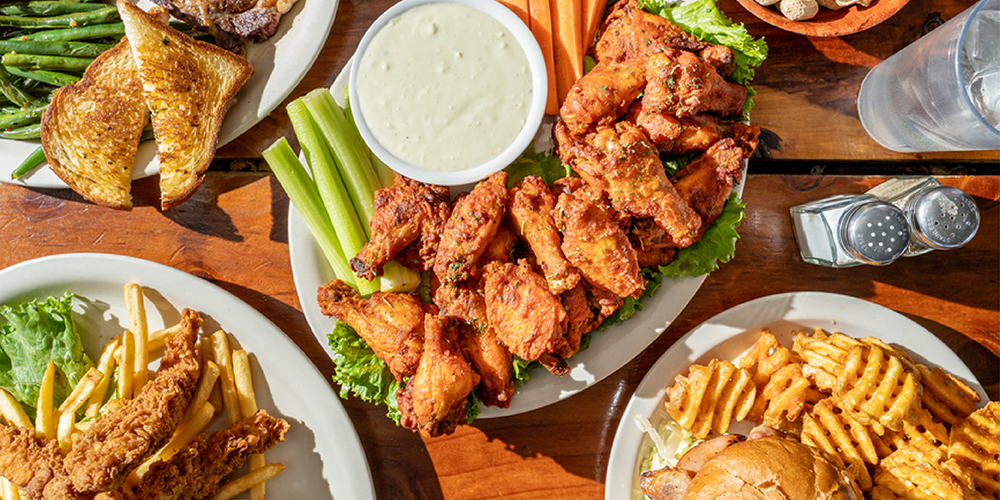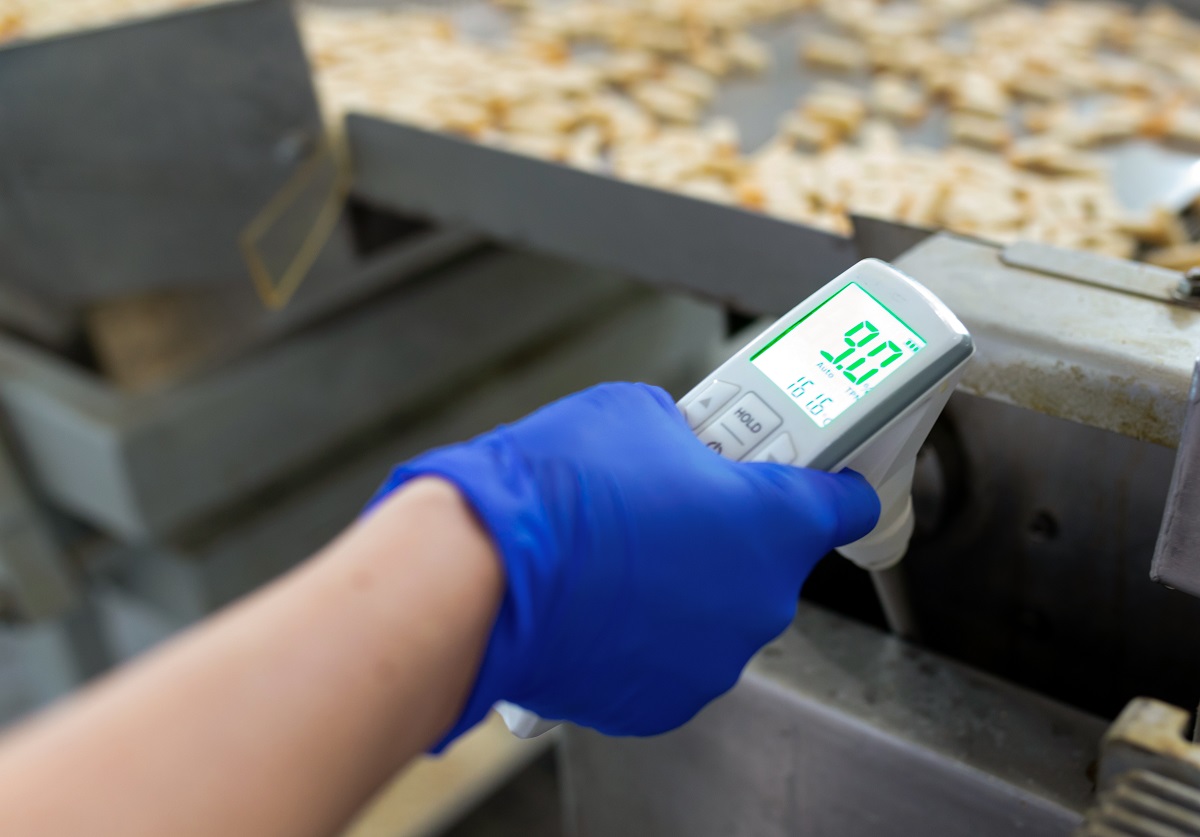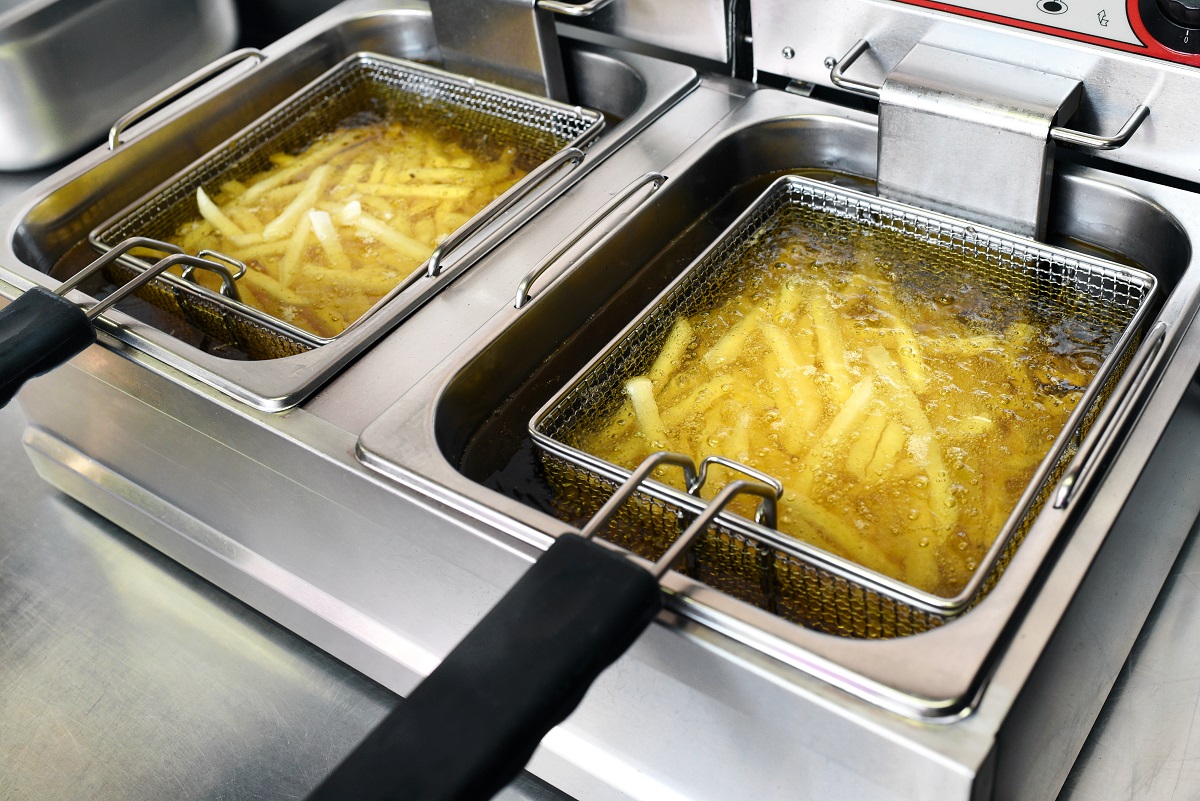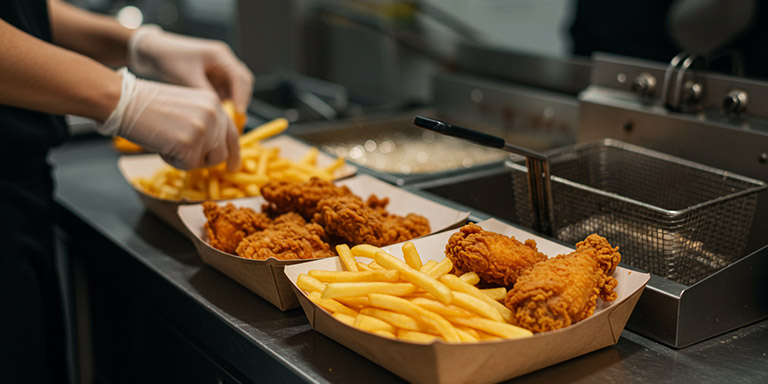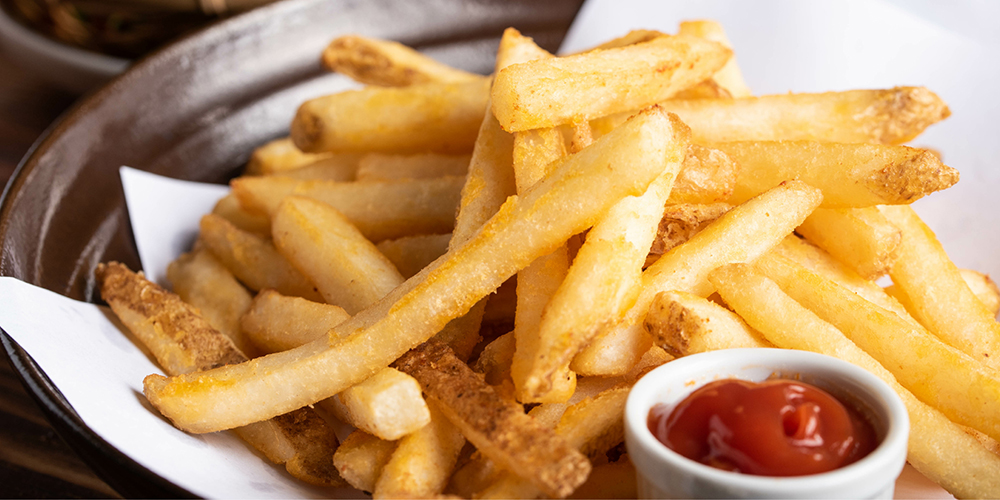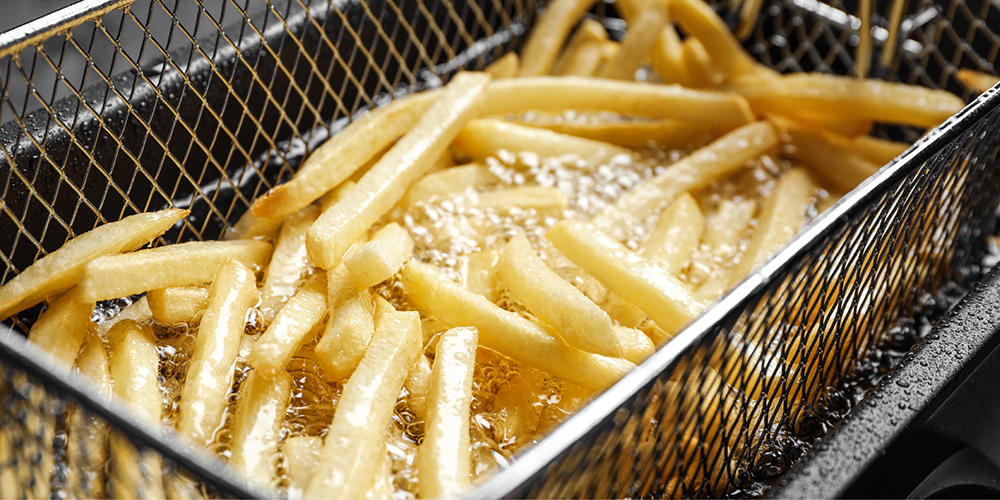Imagine spending an entire day in the kitchen cooking—spicing, seasoning, and saucing up each dish to picture perfection. But now imagine someone decided to package up all that food… and then toss it in the garbage. How would you feel?
In a sense, this is exactly what happens with restaurant food waste. The above scenario, while seemingly dramatic, represents the unfortunate truth of restaurant and commercial kitchens: about one out of every three dishes your chefs make is destined for the landfill.1
In an industry already infamous for thin profit margins, reducing food waste is a strategic way to save money, manpower, and the environment. Read on to learn our top tips for ways to reduce food waste in restaurants.
Types of Restaurant Food Waste
Food waste is prevalent throughout the restaurant industry. Understanding the different types of food waste is the first step towards managing it effectively. Waste can stem from various sources:
- Food spoilage
- Excess prep material
- Leftover ingredients
- Leftover food from uneaten customer meals
- Inefficient oil management
Each type offers unique challenges and opportunities for reduction. So how can restaurants reduce food waste in these areas?
8 Tips for Reducing Food Waste
The question of how to reduce food waste in restaurants and commercial kitchens depends heavily on your unique circumstances. Regardless of your operation, universal steps such as ingredient prep and disposal processes present an opportunity to enhance efficiency, reduce costs, and develop sustainable practices. Exploring restaurant kitchen efficiency tips can further enhance the productivity of your kitchen in reducing food waste.
Here are 8 actionable tips to get you started on reducing food waste in your kitchen:
#1 Conduct a Food Waste Audit
While statistics show that 31% to 40% of restaurant meals become food waste,1 an in-house audit can uncover more details on your specific situation. Here is how you can conduct a food waste audit in your restaurant:
- Set aside one week to track all discarded food, from preparation to plate leftovers. Decide what insights you want to gain—such as waste categories like meat and poultry, which customer orders tend to have leftovers, or how much waste is due to spoilage.
- Aim to establish disposal processes to better categorize the information you’re targeting. Ensure waste type and reason for disposal are documented for later analysis.
- Analyze the data to identify patterns and gain a clearer picture of excess food and waste sources.
With these simple steps, you can unveil specific areas where improvements need to be made in preventing food loss, guiding targeted interventions, and laying the foundation for actionable strategies.
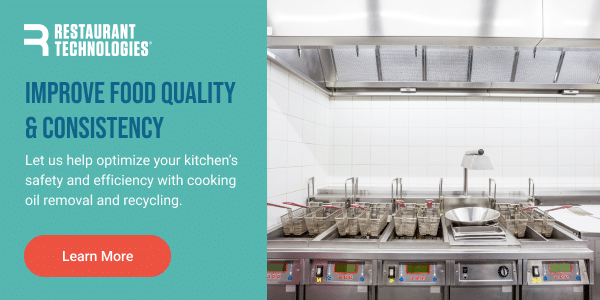
#2 Develop Inventory Management Strategies
Effectively managing your kitchen’s inventory is pivotal to reducing food waste due to spoilage. This management can range from regular inventory assessments to incorporating inventory management software. Properly developing a restaurant waste management system can improve overall food storage and safety.
Regardless of the specific method used, the goal is to adjust stock levels to match demand accurately. This may involve ordering ingredients in smaller, more frequent batches, or conducting a broader analysis to account for seasonal fluctuations. Utilizing the FIFO (first in, first out) method further ensures that older ingredients are rotated to the front, minimizing spoilage.
Collectively, these steps create a more efficient inventory system, ensuring resources and ingredients are optimally utilized, thus improving food waste management.
#3 Optimize Menu Design and Portion Control
One major contributor to food waste is extensive menu options, which demand large reserves of varied ingredients that often end up spoiled.2 Losses are compounded when items on the menu are delivered with oversized portions, leading to leftovers that could have been put to use elsewhere.
To combat this kind of food waste, consider these menu design and portion control suggestions:
- Craft menu options with ingredients that can be cross-utilized, thus reducing the diversity of stock needed and minimizing potential waste.
- Introduce varied portion sizes that cater to customer preference, significantly cutting down on plate waste. Consider introducing smaller portions to further reduce uneaten food.
- Continuously evaluate which dishes perform well—and which don’t—allowing for menu adjustments that align with customer demand and waste reduction goals.
A well-rounded approach not only minimizes waste but also encourages creativity in menu planning, enhancing both the dining experience and the restaurant’s sustainability profile.
#4 Engage and Train Team Members
While you can’t control how much food your customers leave on a plate, you can control the kitchen practices that contribute to food waste. Start by educating all staff on the importance of minimizing waste and the positive impacts on the environment and the restaurant’s bottom line.
Both back-of-house and front-of-house staff can contribute to reduced food waste. Consider implementing training sessions or providing tips specific to their role:
- Back-of-house – Endeavor to cultivate a kitchen culture of efficiency. Ensure ingredients are properly stored and labeled, implement practices that utilize food scraps and trimmings rather than throwing them away, and ensure dishes are not being over-prepared. A well-trained kitchen staff can significantly improve food waste prevention.
- Front-of-house – Wait staff can also contribute to reduced food waste. Train them to emphasize house specials designed to flush excess inventory or encourage diners to bring home leftovers in sustainable, low-impact containers.
Investing in staff training and incentivizing engagement through reward programs can further facilitate sustainable operations.
#5 Recycling and Composting
No matter how many initiatives are taken towards reducing food waste in restaurants, it would be almost impossible to eliminate all forms of waste solely at the restaurant level. Training staff in restaurant cleaning procedures focused on recycling and composting waste can enhance sustainability.
Restaurants can ensure zero-waste operations that are sustainable and eco-friendly by initiating:
- Dedicated recycling programs for non-food waste
- Composting facility partnerships for organic leftovers
- Oil management solutions for recycling used cooking oil
Interestingly, 72% of U.S. diners are growing increasingly aware of the food waste issue, with close to 50% willing to spend more dining at waste-conscious restaurants.3 So these steps do more than address your restaurant’s immediate waste issues—they also contribute to the larger cycle of sustainability and drive a better bottom line.
#6 Participate in Community Food Donation
Connecting with local communities via food donation can have a resounding impact on both the restaurant itself and the area it serves.
Consider donating leftover ingredients to a local food bank to give back to the community. Partnerships with local food banks and shelters can help ensure surplus food is utilized meaningfully. Donation schedules integrate community care into the heart of your restaurant’s daily operations, strengthening bonds with local customers.
Food donations also carry benefits beyond the obvious, such as liability protections and tax breaks. Learning what incentives exist in your restaurant’s area can encourage responsible food management even at the policy level.
#7 Implement a Food Waste Reduction Plan
The variety of options and strategies to reduce food waste can feel overwhelming. But the important thing is simply to get started, and a food waste reduction plan can help you do just that. Consider what specific, achievable goals you want to set for your restaurant. Rather than tackle multiple solutions at once and risk overwhelming yourself and your team, try starting with something simple.
For example, implementing a total oil management solution is a straightforward way to simplify back-of-house operations, reducing costly cooking oil waste with an automated oil removal and recycling system.
#8 Grapple Kitchen Grease Disposal & Waste
Cooking oil can clog pipes and drains, sometimes considered “hazardous waste” by regulatory bodies.4 Training your staff with restaurant safety tips to properly hand oil disposal can help prevent burns in the kitchen and improve efficiency. Doing so will also prevent dangerous oil fires from occurring and enhance restaurant fire safety.
Traditionally, there are two common ways to dispose of kitchen grease and used cooking oil:
- Throwing it away as trash. Since oil cannot be safely disposed of through sink drains, this method requires waiting for the oil to cool down to room temperature, and then mixing it with absorbent powder, padding, or common ingredients like flour and sand. The resulting solids can then be thrown away normally.
- Using a recycling center. If your restaurant has a recycling center nearby, it can be worth asking if they accept used cooking oil and whether they will schedule pickups with your restaurant. Used oil should be carefully loaded into designated receptacles daily and left outside for pickup.
Both of these grease disposal methods have drawbacks. The cost of using absorbent materials, especially for daily oil changes, can add up over time. And utilizing recycling center services leaves your used oil containers exposed to outdoor elements and oil thieves.
That is where our total oil management solution comes in.
Reducing Oil Waste with Total Oil Management
One area that often goes overlooked in addressing the complex issue of food waste is the disposal and management of used cooking oil. While the previously mentioned disposal methods can often prove inefficient, costly, and even harmful to the environment (or your staff), a total oil management solution changes that.
Restaurant Technologies offers a comprehensive approach to oil management that covers every aspect of the cooking oil lifecycle. From delivery and storage to filtration, disposal, and responsible recycling, our system streamlines your back-of-house operations while reducing food waste.
With our automated system, fresh oil is delivered and stored safely, minimizing the risk of spills and contamination. Oil is only delivered as needed, reducing excess inventory and storage issues. By extending the life of your cooking oil with advanced filtration systems, our oil management solution saves costs while maintaining the quality of your fried foods.
For restaurants and commercial kitchens seeking ways to reduce waste and promote sustainability, contact us. Get in touch today to find out what our total oil management solution can do for you.
Sources:
- Walden University. Food Waste in the U. S. Food Service Industry. https://scholarworks.waldenu.edu/cgi/viewcontent.cgi?article=1371&context=ijamt
- The Natural Resources Defense Council. How America Is Losing up to 40 Percent Of Its Food From Farm to Fork to Landfill. https://www.nrdc.org/sites/default/files/wasted-2017-report.pdf
- Restaurant Dive. Food waste reduction is a high priority for U.S. diners, study shows. https://www.restaurantdive.com/news/food-waste-reduction-is-a-high-priority-for-us-diners-study-shows/542898/
- ScienceDirect. The conundrum of waste cooking oil: Transforming hazard into energy. https://www.sciencedirect.com/science/article/abs/pii/S0304389421010931
- Foodprint. The Problem of Food Waste. https://foodprint.org/issues/the-problem-of-food-waste/
- ReFED. Restaurant Food Waste Action Guide. https://refed.org/downloads/Restaurant_Guide_Web.pdf

